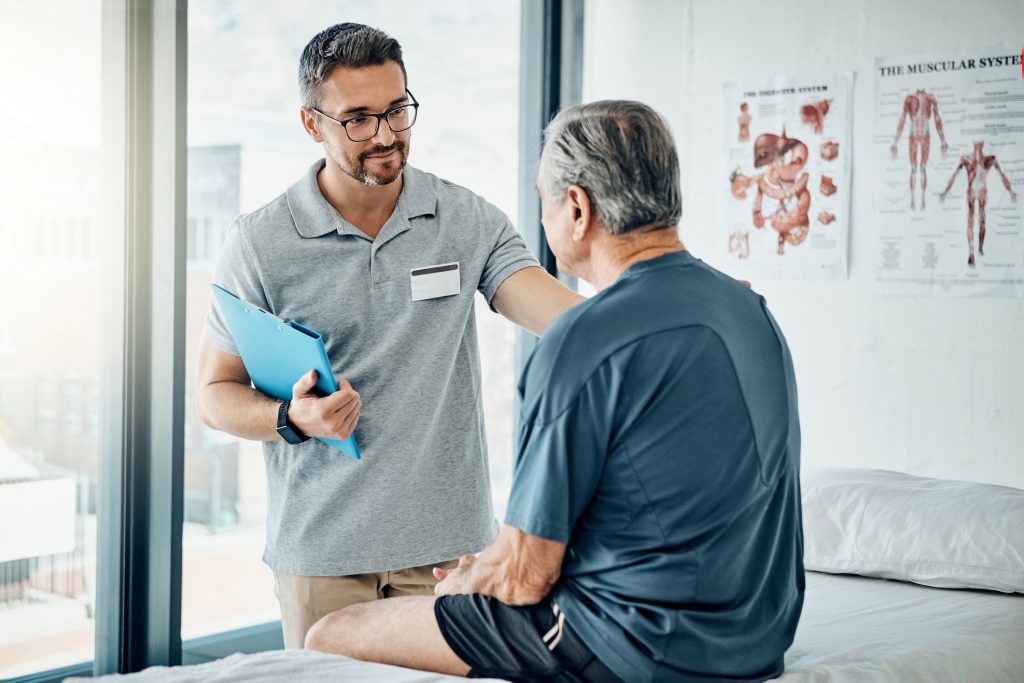Written By: Andrew Morgan, PT, DPT, MBA, COS-C

Patients are more likely to accurately describe their symptoms, medical history, and concerns when they can express themselves in their native language. While I am not a native speaker, I have been proficient in Spanish for over 30 years. I have worked with numerous patients with limited proficiency in English. I remember numerous situations where patients were trying to describe a symptom in English. They begin speaking, almost thinking out loud, in Spanish in an attempt to describe the current problem. At this point, I generally chime in, “digame en Español (tell me in Spanish)”. Without exception, I witnessed a non-verbal relief, quickly followed by a deluge of Spanish explanations that would make Ricky Ricardo look slow. In other words, I get a much more detailed medical history. The accurate exchange of information that follows, allows for more precise physical therapy diagnoses and more effective treatment plans. Conversely, language barriers can lead to misunderstandings, misdiagnoses, and inappropriate treatments, potentially endangering patient health.
Research has demonstrated that speaking a patient’s native language builds trust and rapport. Patients often feel more comfortable and valued when healthcare providers can communicate with them in their preferred language. Consider how you would feel if you were traveling to another country and experienced a healthcare emergency. I think most of us would prefer someone who could speak our native language. I know I would. Comfort, trust, and rapport all help to encourage patients to share sensitive or detailed information that they might withhold if they feel misunderstood or judged. Trusting relationships between patients and providers also increase the likelihood that patients will adhere to prescribed treatments and follow-up recommendations, leading to better health outcomes.
Communicating clearly in a patient’s native language enhances patient education. Understanding medical instructions, the reasons behind specific treatments, and the importance of lifestyle changes is vital for effective self-care and patient adherence. Patients are more likely to grasp these concepts and apply them correctly when explained in a language they fully understand, leading to increased compliance with treatment modalities and the overall plan of care.
Reducing language barriers contributes to greater health equity. Patients from non-dominant language groups often face systemic disadvantages in accessing quality healthcare, simply because they do not understand healthcare options available to them potentially including preventative care options and side effects of medications. When patients do not understand adverse events, hospitalizations inevitably increase, placing additional costs on the entire healthcare system. Providing services in their native language helps mitigate these disparities, ensuring that all patients receive the care they need regardless of linguistic background.
Communicating with patients in their native language is an important cornerstone of effective healthcare. Through an enhancement of understanding, trust, and patient education, breaking a language barrier promotes health equity, leading to better health outcomes and patient satisfaction.
Join me for my Summit Live Stream on September 14, 2024, Introductory Spanish for the Rehabilitation Professional, and learn easy-to-use vocabulary and terminology so you can complete a basic therapy evaluation and basic therapy treatments using Spanish. Not able to attend? Watch the On-Demand version at any time here.
Explore some online continuing education courses from Andrew below:
A Collaborative Approach to OASIS-D1/OASIS E
Evidence-Based Rehabilitation of the Total Knee Arthroplasty
Exercise Prescription in the Geriatric Population
Introductory Spanish for the Rehabilitation Professional
OASIS-D Demystifying the M1800/GG Relationship
Rehab for the Functional Aging Adult
Therapeutic Special Tests in the Geriatric Population
Visit summit-education.com for more information.
About Summit Professional Education
Summit equips therapists with better continuing education courses that provide CEUs while impacting patient outcomes. Find high-quality on-demand CE along with the largest offering of live options — including live webinars, live streams, and in-person courses. Want to deep dive on a topic? Summit offers hundreds of 6-hour courses for the most in-depth learning!